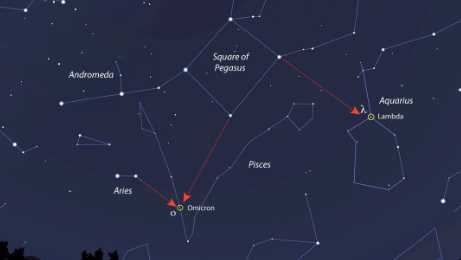Without a planetarium to assist you, it could seem challenging to detect and recognise the planets of the Solar System with the unaided eye if you've only recently begun stargazing. However, this is a great ability to have because it's not as hard to learn as it might seem, and you can even see the planets without a telescope.
In the night sky, locate the planets.
Finding the ecliptic, the fictitious line that denotes the Sun's course across the sky, is the first thing you must do.The ecliptic also indicates the course of the planets since the orbits of all the major planets in the Solar System are generally in the same plane. The planets are all always found close to that line. Does it appear brilliant but not on the ecliptic side of the sky? Therefore, it isn't a planet.
In the night sky, where is the ecliptic?
Keep careful track of the Sun as it moves across the sky to locate the ecliptic. Pay attention to the locations where it rises and sets as well as its daily movements. For instance, how far does it extend from the trees and rooftops across the street? Once you have a sense of the Sun's journey during the day, attempt to imagine how it would seem in the night sky. Pay attention to the Moon as well. Comparing it to the ecliptic, its orbital tilt is around 5°. The ecliptic is therefore always 5° or less from the Moon.
That is roughly the width of your three fingers when they are raised at the end of your extended arm. Finally, keep in mind that the ecliptic moves around during the year. You can envision this by keeping in mind that the Sun is higher in the sky during the summer than it is during the winter.
Identifying planets among the stars
You can determine which objects are planets once you know roughly where to look. The planets appear larger than the far larger and much further away stars, much like a small tree outside your window appears larger than a gigantic tree on a distant hillside. The faint disc shape they have is caused by this apparent size difference, and the more you look for it, the more obvious it will become.
Additionally, they typically don't appear to sparkle since their light appears to us from numerous sources rather than just one, as starlight does.The colours of many planets vary, and in some situations, they might glow far brighter than any star. The planets Mercury and Venus are less powerful.
They are not uninteresting, just that they orbit the Sun more closely than Earth does. They are consistently visible in the sky near the Sun from our vantage point. It never distances Venus from it by more than 47°, or roughly the width of five fists held out at arm's length. Mercury is even closer, never being farther than 28°.
This indicates that they either rise just before the Sun or set just after it. Never in the middle of the night will they soar high above. Mercury is incredibly dim, moves quickly, and is located close to the Sun, making it exceedingly challenging to observe. You'll need to act quickly to see it because it only appears for a brief period of time, typically in golden twilight.




Leave Comment
1 Comments